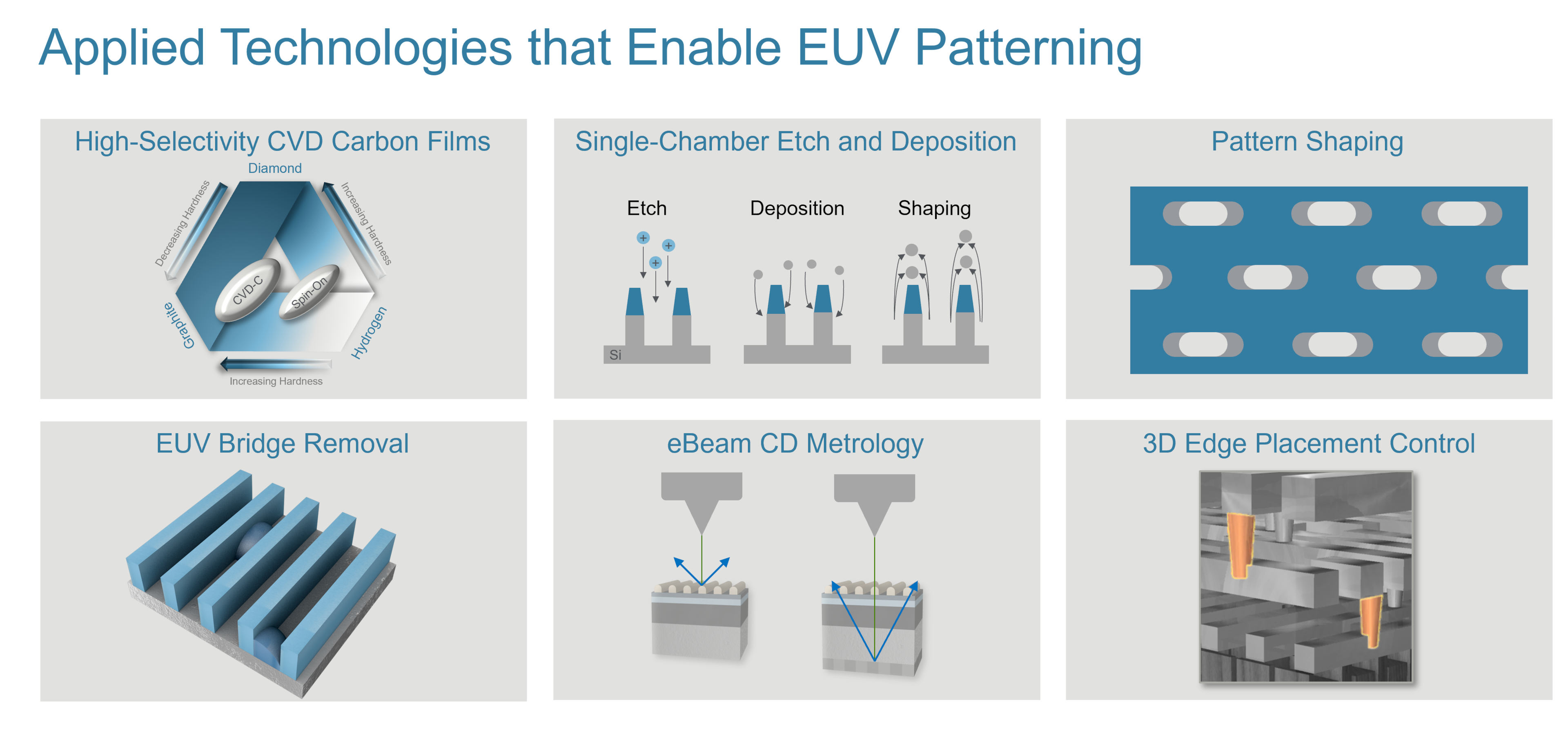市場與轉折點
半導體 (Semiconductor)
解決方案與軟體
圖案化
多年來,光刻技術的進步和材料工程技術共同發展,縮小了特徵並增加了的密度。 極紫外線 (EUV) 是向前邁出的一大步,能夠透過單次微影創建 25 奈米特徵。 如今,我們需要更小的特徵,而 EUV 雙圖案化——該工藝—已經投入使用。 未來,高數值孔徑(高數值孔徑)EUV 即將以單次微影通道取代 EUV 雙圖案化。
需要進行許多材料工程創新才能使 EUV 微縮技術持續下去,包括用更耐蝕刻的薄膜取代更軟的旋塗沉積薄膜。 Stensar ™高階圖案薄膜 幫助客戶調整 EUV 硬掩模層以獲得特定的厚度和蝕刻彈性,以便他們可以在整個晶圓上實現近乎完美的 EUV 圖案轉移均勻性。
EUV 中的光子數量較少會產生隨機誤差,導致圖案化的線條、空間和通孔變化。 EUV 圖案越小,我們嘗試製作的特徵中的隨機誤差就越大。應用材料公司的Sym3 ® Y 蝕刻系統 使客戶能夠在同一腔室中蝕刻和沈積材料,以在蝕刻到晶圓之前修復隨機錯誤並改進 EUV 圖案。
EUV 雙圖案化是一種常用於生產更高元件密度和更緊密尖端間距的技術。雖然雙圖案化可以有效提高特徵密度,但它增加了設計和圖案化的複雜性以及消耗時間、能源、材料和水的製程步驟,並增加了晶圓廠和晶圓生產的成本。 Sculpta®塑造系統 幫助晶片製造商縮小設計,無需雙重圖案,同時減少過程中使用的能源和材料
EUV 光阻比 DUV 光阻 更薄、更精細 。如果我們使用傳統的電子束系統來尋找隨機缺陷並測量關鍵尺寸和覆蓋層,我們可能會扭曲精緻抗蝕劑上的圖案。為了幫助客戶在 EUV 的開發後和蝕刻後階段進行更徹底的檢查,應用材料公司的 VeritySEM® CD 計量系統 使用較低的能量來最大限度地減少與抗蝕劑的相互作用,並使用獨特的技術來提高 EUV 圖案影像分辨率,從而在低能量下為我們提供清晰的暗和光對比度。
在 EUV 之前,邊緣放置要容易得多,其中特徵更大,並且光學劃線的對齊使我們能夠正確對齊層。然而,光學代理目標至少比我們使用 EUV 創建的功能大 10 倍。此外,雙圖案化等迭代製程步驟會帶來變化,而 3D 設計會產生應力和層間變形。 PROVision®束系統 讓工程師同時查看和測量所有 EUV 層的邊緣佈局。

